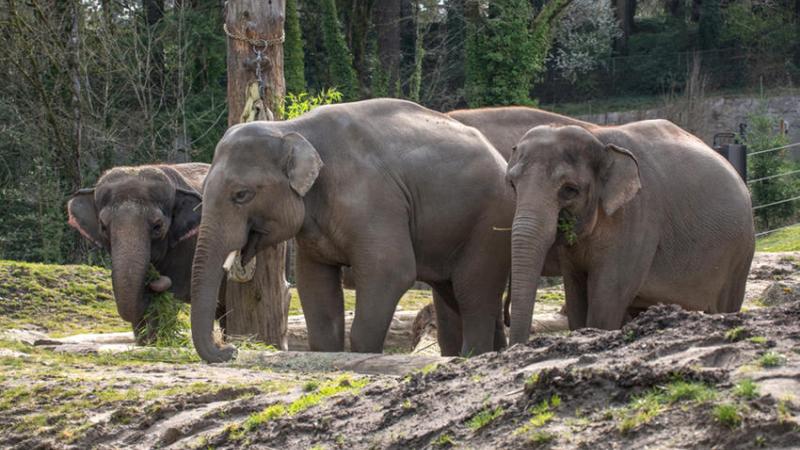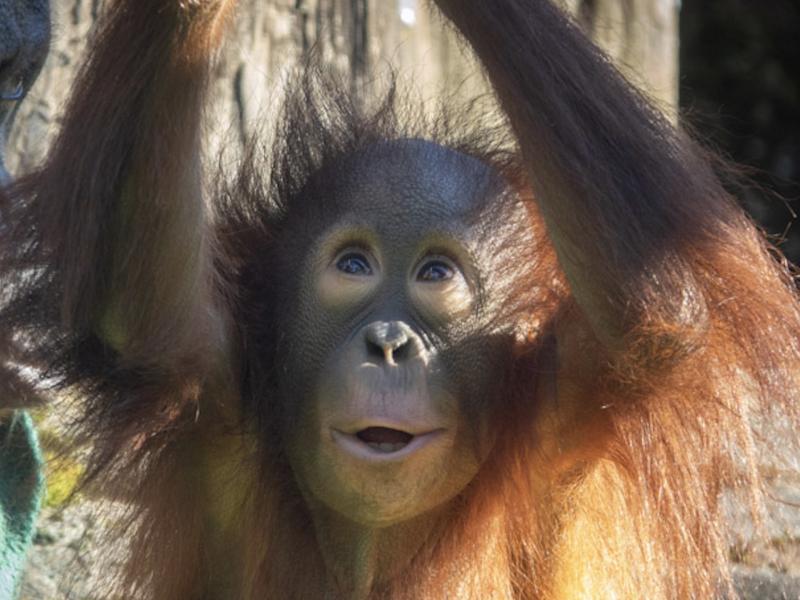
Scientist uses 'elephant Fitbits' to monitor activity at state-of-the-art Elephant Lands
A local conservation biologist has confirmed what millions of Oregon Zoo visitors have already seen: Elephant Lands, the visionary new home for this community's beloved pachyderm family, has stepped up the game when it comes to elephant welfare.
"The elephants are taking more steps, in more places, than ever before," said Sharon Glaeser, an elephant researcher at Portland State University.
Over the past six years, the zoo's elephants have been logging their steps by wearing motion-measuring anklets. Like human Fitbits, but much more sturdy and robust, the anklets use GPS data loggers to tally the elephants' daily movement.
The anklets were originally part of national study measuring outdoor walking distances of 56 elephants in 30 different zoos. Conducted in 2012, and published in the scientific journal PLOS ONE, the study found that zoo elephants walked 3.2 miles per day on average, comparable to the daily distances covered by wild elephants. The Oregon Zoo's Sung-Surin was one of the study's participants, walking an average of 4.7 miles per day.
"At the time of that original study, the Oregon Zoo was still building Elephant Lands," Glaeser said. "So we wanted to continue the research and find out how things might have changed with the new habitat."
Elephant Lands, four times larger than the previous elephant area, opened in 2015, extending around most of the zoo's eastern border — a wide, hilly swath that runs from south of the zoo's central lawn northward almost to the veterinary medical center and Family Farm.
The new habitat was designed to promote activity and choice, with a variety of feeding methods that mimic the grazing habits of wild elephants: timed feeders, overhead feeders that prompt the elephants to stretch and sometimes climb on logs, and puzzles that require manipulation to acquire food. These snacking opportunities are spread throughout three outdoor habitats, so the elephants forage and explore for up to 16 hours a day.
The results of the latest walking study, while not surprising, were gratifying, Glaeser said. GPS mapping from the new habitat showed the elephants are walking farther than before, moving throughout the entire habitat and all around its 1.3-mile perimeter. Sung-Surin doubled her average from the previous study and now walks an average of 9.6 miles a day.
"They're actually walking even more than that," Glaeser said. "At Elephant Lands, they can choose to go indoors if they want, and the GPS units can only reliably measure the elephants' movement when they're outdoors."
Glaeser's Oregon Zoo work is part of a larger effort aimed at determining objective indicators of well-being for elephants both in zoos and in their native range countries.
The Oregon Zoo is recognized worldwide for its Asian elephant program, which has spanned more than 60 years. Considered highly endangered in their range countries, Asian elephants are threatened by habitat loss, conflict with humans and disease. It is estimated that just 40,000 to 50,000 elephants remain in fragmented populations from India to Borneo. The zoo supports a broad range of efforts to help wild elephants, and has established a $1 million endowment fund supporting Asian elephant conservation.
More News

Jolene turns 2: Zoo to celebrate orangutan's 2nd birthday
The littlest member of the orangutan family is celebrating a big milestone this week: Jolene will turn 2 on Saturday.April 12, 2024

Seven chicks and counting: Zoo welcomes first condors of 2024
Seven fluffy chicks hatched last month at the Oregon Zoo’s Jonsson Center for Wildlife Conservation.April 5, 2024

Zoo seeks pika watchers for summer season
The zoo is recruiting volunteers to seek out one of the Columbia River Gorge’s fluffiest residents: the American pika.April 3, 2024

